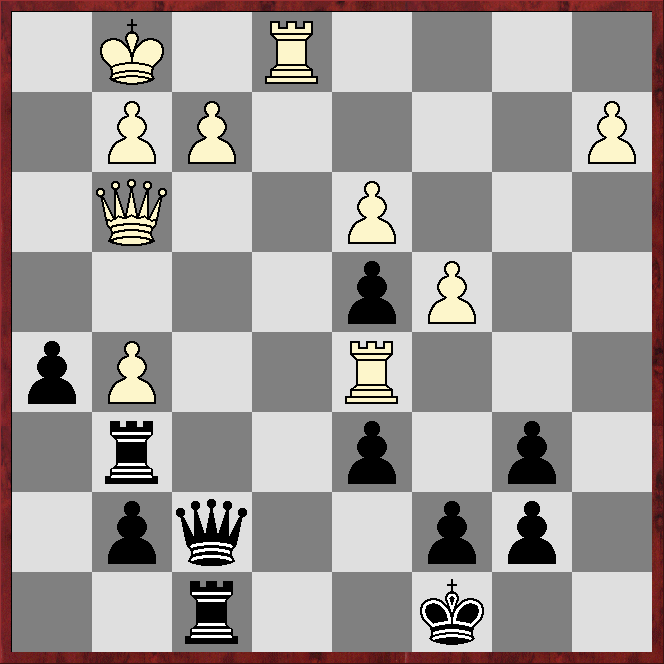*****
*****
*****
*****
*****
*****
*****
Black threatens 21...g5, followed by opening lines to the white king.
Stockfish17 and Dragon1 want White to play 21.Qxg7, which I (mistakenly) did not seriously consider.
Instead I played the engines' second choice, 21.b6, the game continuing 21...axb6 22.Rb5 Qf7 23.Rd5 Rh6 24.h4 Rg6 25.Ng5 Bxg5 26.hxg5, reaching the following position.
Instead I played the engines' second choice, 21.b6, the game continuing 21...axb6 22.Rb5 Qf7 23.Rd5 Rh6 24.h4 Rg6 25.Ng5 Bxg5 26.hxg5, reaching the following position.
*****
*****
*****
*****
I cannot be sure, but here I suspect my opponent thought something like this:
White's pawn sacrifice caught me by surprise, and if he now regains the pawn he may well be better. I need to somehow defend d4.
At first glance 26...Qf4 looks good, especially if it leads to queens coming off, as White probably has the safer king. BUT White can reply 27.Re8+, with the forcing continuation 27...Kd7 28.Rxf8 Qxf8 29.Qh3+ Re6 (29...Ke7 looks unpleasant after both 30.Qxh5 and 30.Rf5) 30.Rxd4, when White has regained his pawn, threatens the h pawn and has a pin on the black rook.
That won't do, but instead I can defend d4 with 29...c5 and I remain a pawn up as 30.Rxd6 is a horrible blunder thanks to 30...Rxd6 31.Qxd6 Qxf2+ etc.
There is nothing wrong with White thinking like that, at least as far as the analysis goes.
But it is mistaken thinking because it focuses exclusively on defending d4, rather than looking at the bigger picture.
Instead of the game's 29...c5 the engines point out the much superior 29...c6 30.Rxd4 Rxg5, when 31.Qxg5 loses to 31...Qxf2+ 32.Kh2 Qxd4.
So White should probably play 31.Qe3, but after 31...Re5 Black is a pawn up and has successfully contested the open file.
LESSON: beware getting so engrossed in one aspect of a position that you lose focus on the bigger picture.


No comments:
Post a Comment